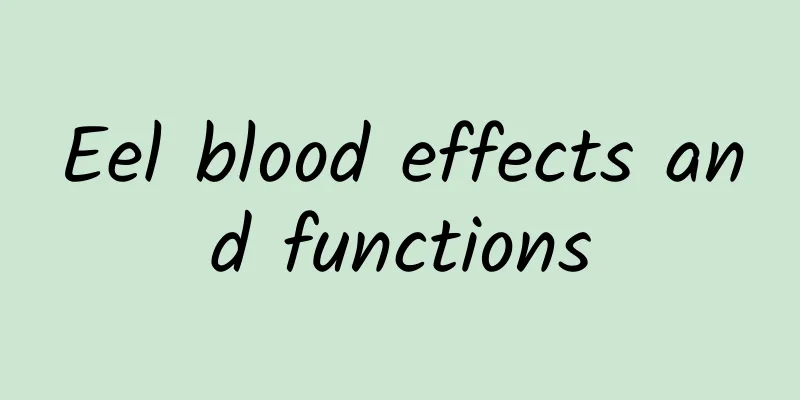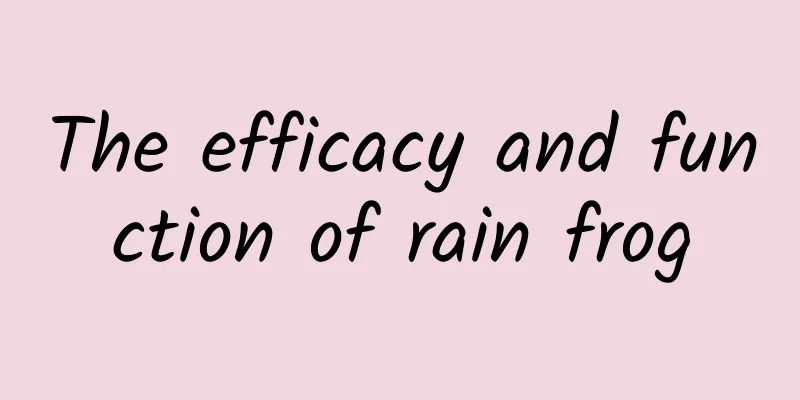The efficacy and function of purple chrysanthemum

|
We all know that chrysanthemums are divided into many varieties, so the flower juice he guessed is of different colors. The common chrysanthemums we have are white and yellow. In fact, there is also a kind of chrysanthemum that is purple. This purple chrysanthemum is relatively rare, so its medicinal value is also extremely high. Compared with yellow and white chrysanthemums, purple ones are more precious. So what are the effects and functions of purple chrysanthemums? Chrysanthemum is the dried inflorescence of the chrysanthemum plant of the Asteraceae family. It is a commonly used Chinese medicine in my country and has the effects of dispelling wind, clearing heat, improving eyesight and detoxifying. It is mainly used to treat headaches, dizziness, red eyes, chest heat, furuncles, swelling and other symptoms. Modern pharmacological research shows that chrysanthemum has multiple pharmacological activities such as treating coronary heart disease, lowering blood pressure, preventing hyperlipidemia, antibacterial, antiviral, anti-inflammatory, and anti-aging. At present, there are eight major sources of medicinal chrysanthemum in the Chinese market, namely Hangzhou chrysanthemum, Bo chrysanthemum, Gong chrysanthemum, Chu chrysanthemum, Qi chrysanthemum, Huai chrysanthemum, Ji chrysanthemum and Huang chrysanthemum. Part I of the "Chinese Pharmacopoeia" (2000 edition) includes four varieties of chrysanthemum, namely Bo chrysanthemum, Chu chrysanthemum, Gong chrysanthemum and Hangzhou chrysanthemum, according to their different origins and processing methods. Chrysanthemum is a plant that can be used as both medicine and food. Its classification, identification, chemistry, clinical practice, and pharmacology have been reported both at home and abroad. This article only gives an overview of the research on the chemical composition and pharmacological activity of chrysanthemum at home and abroad. 1. Chemical composition The chemical composition of chrysanthemum varies depending on its origin and variety. At present, there are reports on the chemical components of chrysanthemum from four sources included in the pharmacopoeia. Studies have found that the chemical composition of chrysanthemum is relatively complex, among which flavonoids, triterpenoids and volatile oils are its main active ingredients. Dispel wind and heat, soothe the liver and improve eyesight. Used for wind-heat cold, headache, dizziness, red and swollen eyes, and blurred vision. It has sedative and antipyretic effects. It has inhibitory effects on Staphylococcus aureus, Group B Streptococcus, Shigella dysenteriae, Salmonella typhi, Salmonella paratyphi, Escherichia coli, Pseudomonas aeruginosa, human tuberculosis and influenza virus. It can significantly dilate coronary arteries and increase blood flow. Can enhance capillary resistance. Chrysanthemum glycosides have a blood pressure lowering effect. It is used for colds with wind-heat, fever and dizziness; heat in the liver meridian; red eyes and excessive tears, or liver-kidney yin deficiency, blurred vision; hyperactivity of liver yang, dizziness and headache; and swollen and painful sores. Modern use is also used for coronary heart disease and hypertension The efficacy and function of Sterculia lychnophora chrysanthemum tea Plantago ovata itself has the effects of relieving sore throat and detoxifying, moistening the intestines and promoting bowel movements, clearing away heat and moistening the lungs, and can effectively treat sore throat. Chrysanthemum tea also has the effect of reducing internal heat. The combination of the two can effectively improve oral ulcers and sore throats. As long as you drink it in moderation, it can help us quickly achieve the purpose of reducing internal heat, which is more suitable for the hot summer. |
<<: The efficacy and function of Chinese medicine tortoise shell
>>: The efficacy of drinking Astragalus and Polygonatum odoratum in water
Recommend
Tearful Dog Head: Will they cry with joy when they are reunited with their owners?
In May this year, a Bichon Frise named "Coff...
Boston Consulting Group: 2024 Black Friday French Consumer Survey Report
Boston Consulting Group has released the "20...
[Fighting the "Three Summers" to Ensure a Good Harvest] In addition to the "rotten rain", wheat harvests also need to guard against these meteorological disasters
At present, wheat has gradually entered the conce...
The efficacy and function of Arisaema
Most Chinese medicinal materials have good effect...
Chang'e 6 is launched today! Reviewing Chang'e's 17-year lunar exploration feat!
On May 1, the National Space Administration relea...
What are the effects and functions of Fu Shen?
Usually, you may not have heard of many medicinal...
CNNIC: The 38th Statistical Report on the Development of Internet in China in 2016 - Development of Business Transaction Applications (IX)
Report download: Add 199IT official WeChat [i199i...
Constellation navigation, flyby exploration, a new round of lunar exploration begins, and new trends gradually emerge
Recently, China, the United States, Russia, the E...
Thousand sheets, bean curd sheets, vegetarian chicken… How do Chinese people make use of soybeans?
Winter is here, and it's time to eat hot pot....
The efficacy and function of Bupleurum chinense
Bupleurum chinense has a long history, and up to ...
As soon as Fubao got home, he started showing off his bamboo. He is a bear, so why does he choose to be a vegetarian? | Expo Daily
As soon as Fubao got home, he started showing off...
The efficacy and function of horse post
Traditional Chinese medicine is very helpful in t...
Does the "Golden Eye" in "007" really exist? How is it a space weapons control center?
1. Let’s start from watching the 007 series of mo...
Is there glass for building a lunar base? Chinese scientists have made the latest discovery of lunar soil
There is glass on the moon! On the 7th, the repor...
What are the taboos of mistletoe
Mistletoe is a parasitic dried leafy stem and bra...









